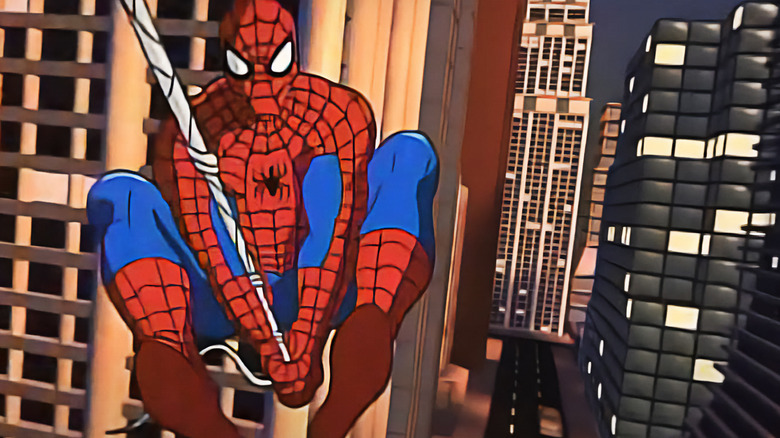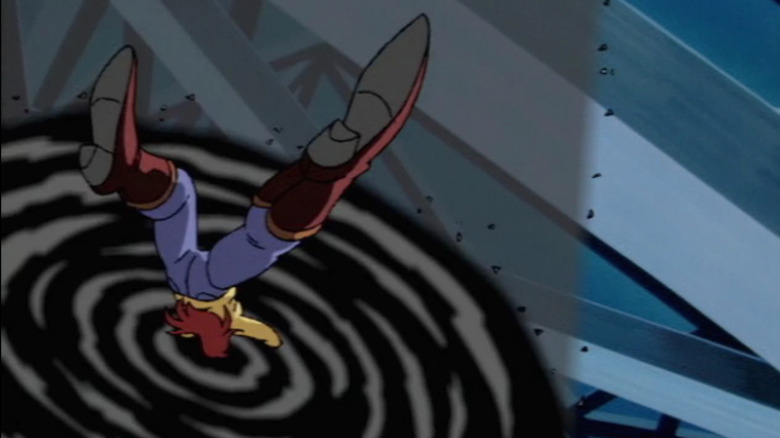
"Spider-Man: Across The Spider-Verse" is set to take animation to a whole new level this summer, pushing the boundaries of not just Spider-Man stories but of storytelling itself. That's great for fans of the character because when I was a kid, aside from the comics, all we had was one excellent Fox Kids cartoon. In 1994, there were no Tim Burton-directed blockbusters to help bolster the popularity of Spider-Man. In fact, there were no major movies at all that featured the web-slinger. "Spider-Man: The Animated Series," which ran from 1994–1998, was the definitive version of the character for many a '90s kid.
Headed by showrunner John Semper, the 65 episodes managed to respect classic Spidey stories while updating things for the '90s. Like the "X-Men" animated series, it had a killer theme song, and voice artist Chris Barnes' Peter Parker/Spider-Man was perfectly pitched. On top of that, the TV show had some real emotional weight, dealing with adult themes while making them accessible and appropriate for kids. The love interests, too, felt like they served a purpose rather than being an afterthought, with Peter constantly having to contend with his ongoing affections for both Mary Jane (Saratoga Ballantine) and Felicia Hardy/Black Cat (Jennifer Hale).
One thing Peter didn't have to worry about, though, was his other famous love interest from the comics: Gwen Stacy. Semper decided not to include her in the series in any meaningful way, even though she had been around since 1965. Gwen only shows up at the end of "Spider-Man: The Animated Series" in what is basically a brief cameo during the final episode, "Farewell, Spider-Man." Otherwise, she was completely absent. But why overlook this classic Stan Lee creation? Well, Semper wasn't all that keen on her tendency, you know, to die.
'All Roads Lead To Death'

Gwen Stacy was introduced in the Marvel comics in 1965, becoming Peter Parker's first major love interest. She was killed during the events of "The Amazing Spider-Man" #121 in 1973 after she was thrown from a bridge by the Green Goblin. Spider-Man tried to rescue her by shooting a web strand, only for her neck to break from the whiplash. It was a controversial moment in comics history -- recreated onscreen in 2014's "The Amazing Spider-Man 2," where Emma Stone's Gwen Stacy suffers a similar fate.
And while Marvel has since brought the character back in numerous forms since that fateful 1973 issue, her death has somewhat overshadowed everything to do with Gwen Stacy ever since. This is pretty much why John Semper decided to steer clear of Gwen when it came time to produce his vision of Spider-Man's universe. Speaking to Marvel Animation Age (via The World's Finest), Semper said:
"I chose to go with Felicia Hardy instead of Gwen Stacy because all roads with Gwen lead to death, which we couldn't really do on [a] Saturday morning [cartoon]. But Felicia in our series was really a completely new character. She wasn't the Felicia of the comics at all. So I guess I can take some credit for 'creating' the version of her that we used."
Much of the production of "Spider-Man: The Animated Series" seemed to be affected by outside interests. Toy sales controlled the first season, with its one-off storylines just excuses to introduce new villains. But more generally, Semper and his team were hampered by network censors and their requirements to keep children's animation family-friendly. And so, Gwen, whose death looms large over her character, just wasn't the right fit.
'Just A Part Of Life'

Interestingly enough, John Semper and co. did incorporate Gwen Stacy's death into their series in an indirect way. In the final episode of season 3, "Turning Point," Green Goblin launched a missile that caused Mary Jane to stumble off the edge of a bridge, falling through a portal into a state of limbo where she's unreachable by Spider-Man or anyone else. As an example of the serious tone "Spider-Man: The Animated Series" often took, this episode would indeed be a turning point for the show, with Peter Parker being deeply emotionally affected by the incident. It's also an example of how the show often had to rework classic Spidey moments so as to not run afoul of those pesky censors.
While those restrictions played a big part in how "Spider-Man: The Animated Series" dealt with heavy themes like death, they weren't any more stringent for "Spider-Man" than they were for other kids' cartoons in the '90s. In a 2016 podcast interview, Semper said, "I've been working in television for years, I've been showrunning for years. These [kinds] of notes were just a part of life. I did not get notes any different from anyone else making animation for children then and probably now. Nothing changes."
Still, with Gwen Stacy being forever connected to her infamous 1973 demise in the comics, it makes sense that Semper and his team decided not to include her. After all, in a show where you literally couldn't show anyone dying, how were you going to make significant use of a character famous for doing just that?
Read this next: MCU Superpowers That Don't Quite Make Sense
The post Spider-Man: The Animated Series Dropped Gwen Stacy Over Her Tendency To Die appeared first on /Film.
0 Commentaires